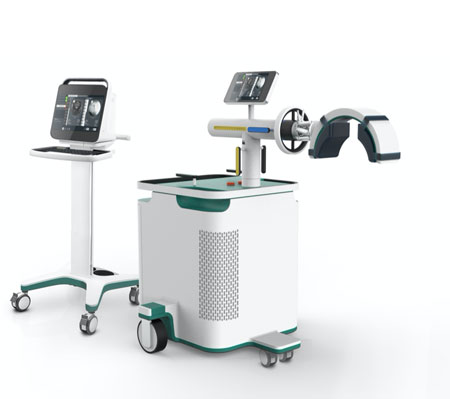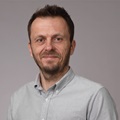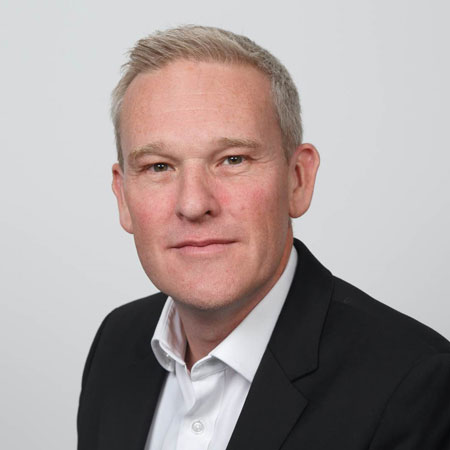Start-Up Spotlight: OrthoSon Targets Back Pain With Ultrasound, Injectable Hydrogel Combo
Executive Summary
The Oxford University spin-off has raised over £3m so far to develop its minimally invasive disc nucleus replacement technology and plans a £10m series A.
Nucleus pulposus implants that can alleviate pain and even reverse the disease process have long shown promise as a new option for treating deteriorated spinal discs, providing a long-term treatment option that avoided invasive surgical procedures such as disc replacement or spinal fusion.
Products being developed around 10 years ago included Disc Dynamics’ DASCOR disc arthroplasty device, an in-situ, curable polymer designed to replace the degenerated nucleus and restore the disc function. While these, and older technologies, such as prosthetic disc nucleus products, showed that water-absorbing hydrogels could be used to replace the cushioning function of a healthy disc, while restoring or maintaining disc height and allowing normal range of motion. But there were complications for many patients that prevented these products from being approved in the US.
One of these problems was the result of damage caused, during the surgery, to the annulus fibrosus, the strong outer ligamentous ring that surrounds the nucleus. This damage meant that these implants were frequently expelled under load.
Preserving The Annulus Fibrosus At All Costs
What makes the OrthoSon approach different, according to the company’s CEO Rich Simmonds, is the use of precise, image guided destruction of the disc nucleus with complete preservation of the annulus fibrosus. “[With our technology] we are preserving the annulus [fibrosus] at all costs,” said Simmonds. “We’ve managed to learn from the mistakes of others.”
 OrthoSon's technology combines diagnostic and therapeutic ultrasound
OrthoSon Ltd
OrthoSon's technology combines diagnostic and therapeutic ultrasound
OrthoSon Ltd
OrthoSon’s technology uses a combination of high-intensity, high-precision focussed ultrasound, gas-stabilising solid particles and injectable hydrogel, all delivered through a small needle directly into the degenerated disc. After the particles are injected into the disc, externally delivered focussed ultrasound is used to implode the injected gas repeatedly, causing complete breakdown of the nucleus of the degenerated disc. OrthoSon’s hydrogel is then injected through the original needle, where it cures to form a replacement nucleus that restores the function of the spinal segment. Although OrthoSon has developed a proprietary hydrogel filler, the company’s focused ultrasound technology could potentially also be used with other hydrogels in development, said Simmonds.
Simple Procedure Envisioned
While OrthoSon’s procedure and equipment is still in development – preclinical studies have yet to start – Simmonds envisages a simple procedure that can be performed by an interventional radiologist or a spine surgeon.
The first part of the process will be to insert a sub-millimeter-diameter needle into the center of the patient’s disc under C-arm x-ray guidance and then inject around 30 billion, 0.5 micron-diameter bubbles of gas into the nucleus. A specially developed, curved ultrasound array is then lowered onto the patient’s spine.
“The [ultrasound] array comprises 256 precise elements, creating two focused cones of ultrasound energy that will cavitate, or implode, only the bubbles of gas we’ve injected,” said Simmonds. The treatment zone is the size of a grain of rice and is tracked in three-dimensional ultrasound in real time using the same ultrasound array. The treatment zone is moved electronically with software controlling the timing and location of the tissue destruction the until the degenerated nucleus pulposus is destroyed. The array is then lifted, and the liquid hydrogel is injected through the same needle, where it cures in situ in the area treated.
“Our method restores the disc to native biomechanics." – Rich Simmonds
Although it’s in early stages of development, almost 10 years of research at the University of Oxford’s Institute of Biomedical Engineering have shown that the technique is reproducible and can be controlled during the procedure, so that results are consistent between different patients with different levels of disc degeneration. “Our method restores the disc to native biomechanics; we get a complete replacement of the nucleus pulposus and an even pressure distribution profile across the disc so that we avoid unevenly loading the vertebra,” he said.
Simmonds described the company’s focused ultrasound technology as a sub-specialism of therapeutic high-intensity focused ultrasound (HIFU), used in procedures such as prostate tissue destruction. While HIFU relies on gases already present in tissue, it is difficult to control as precisely and is not suitable for structures close to delicate nerves or blood vessels, such as the spine. As OrthoSon’s technology injects billions of gas particles of the same size and shape in a known location to enable precise tissue destruction, it can be performed at energy levels hundreds of times lower than HIFU in a much more focused way. “You need the co-incidence of both the ultrasound and the gas bubbles. We can operate safely and precisely because at our energy levels, each on their own are completely inert,” he said.
Simmonds said the technique could be used in several discs on multiple levels. The total procedure time is around 45 mins. “We are targeting the lumbar spine to begin but our ambition to apply the technology to the cervical spine too.”
Market Potential Of 500K Patients Each Year
OrthoSon’s initial aim is to treat persistent, recurrent low back pain – the sort that prevents relatively young, active people from doing things they want to do, be that playing sport or just walking the dog.
These patients typically have a physical care program, including regular injections for pain relief, then six months later still suffering from pain and limited movement. They are then faced with choice: live with the disability, manage with increasingly strong pain medication or consider surgical options. At this stage patients may then enter a spiral of opioid use, with stronger and stronger doses, but may still end up with a spinal fusion.
Simmonds believes that around 120,000 patients per year in the US are suitable for the OrthoSon procedure, or around 20% of those who currently undergo surgery. A similar number may prefer to avoid surgery, he said, bringing the total addressable market for OrthoSon in the US to around 250,000 patients per year and there are about that many in Europe and the rest of the world.
While the spine surgery/fusion market continues to grow slowly, the use of interventional pain technologies, such as OrthoSon, to treat pain has a 17-18% growth rate, said Simmonds. He cited the example of Boston Scientific’s $465m acquisition of VertiFlex in 2019 as an example of growth potential in this sector. The company makes the Superion indirect decompression system for lumbar spinal stenosis, a minimally invasive procedure performed by interventional pain specialist. (Also see "Boston Scientific Buys Vertiflex For $465M To Add Minimally Invasive Lumbar Procedure" - Medtech Insight, 9 May, 2019.)
Oxford University Spin-Out
A spin out from the University of Oxford, OrthoSon received pre-seed funding from sister company OxSonics Therapeutics. A succession of post-doctoral researchers had worked on the project for almost 10 years and amassed a family of seven patents and proof of concept work “to show that nucleotomy could be performed very minimally invasively using high precision focused ultrasound,” said Simmonds.
OrthoSon Ltd
-
Address: The Magdalen Centre, Oxford Science Park, OX4 4GA, UK
-
Contact: Rich Simmonds, CEO https://www.orthoson.com/
-
Founded: 2018
-
Founder: Constantin Coussios
-
Number of Employees: 11
-
Financing Total To Date: £3.25m
-
Investors: Oxford Technology and Innovations EIS Fund (OTIF), grants from Innovate UK
-
Board of Directors: Colin Story, James Mallinson, Glyn Edwards MBE
OrthoSon has raised £3.25m ($4.2m) so far, comprising £1.8m in seed funding in November 2019 led by Oxford Technology and Innovations EIS Fund and its advisor Oxford Investment Consultants, and £1.45m in grant funding from Innovate UK, the UK’s innovation agency.
In 2021, the company plans to raise another £9m-£10m in a series A to fund it beyond first-in-human trials in 2023, after a prolonged phase of preclinical work in 2022.
Simmonds, who spent around 15 years in the orthopaedics and spine products market at companies including Orthofix, was employee number one at OrthoSon. He was leading the EMEA business for Terumo’s Pharmaceutical Solutions Division when the phone rang. “I knew there was a clinical unmet need and little innovation in the [degenerative disc] space, so jumped at the chance,” he said.
OrthoSon’s chief technology officer is founder Constantin Coussios, a therapeutic ultrasound expert and director of the Institute of Biomedical Engineering at the University of Oxford.
In September 2020, the company moved into its new office in The Magdalen Centre at Oxford Science Park.
UK Start-Up Challenges
When asked about the environment for building a start-up in the UK at a time of Brexit and divergence of UK medtech regulation away from the EU, Simmonds was sanguine. “As any business based in the UK will tell you, uncertainty is the main problem. No-one knows what the regulatory environment in the UK will be. To be honest, we have just ignored it as we don’t know what will happen. We know the structures in US and EU, our key markets. When the UK decides what its regulatory position is, we will adjust for that.”
Simmonds said the more immediate challenge as a start-up in the UK is to ensure it is still an attractive base to bring the very best talent into the business. “As long as that remains the case, we won’t have many complaints. We are in a very specialist field of therapeutic ultrasound and implantable orthopedic spine devices and we need to look globally for very talented people.”

